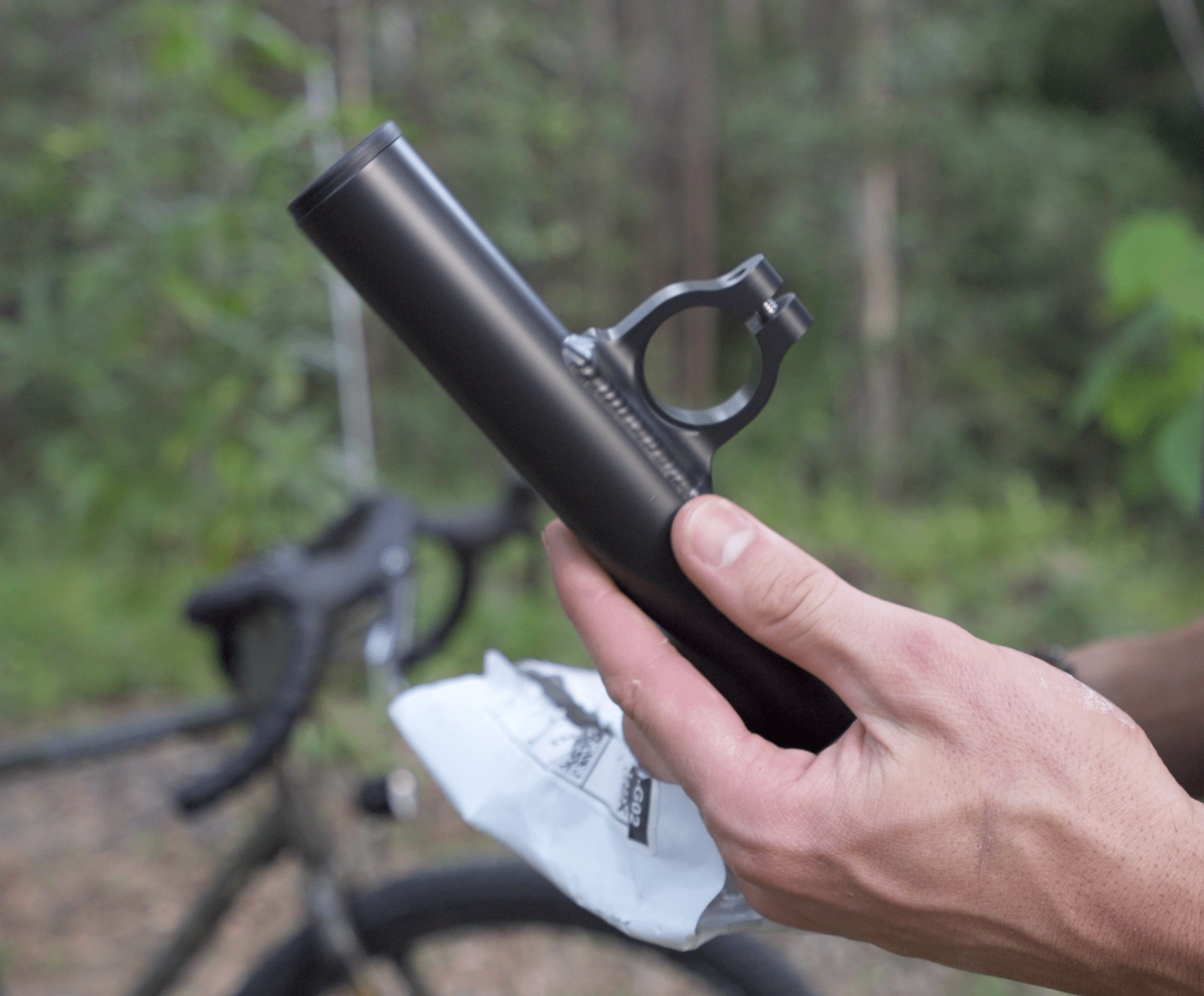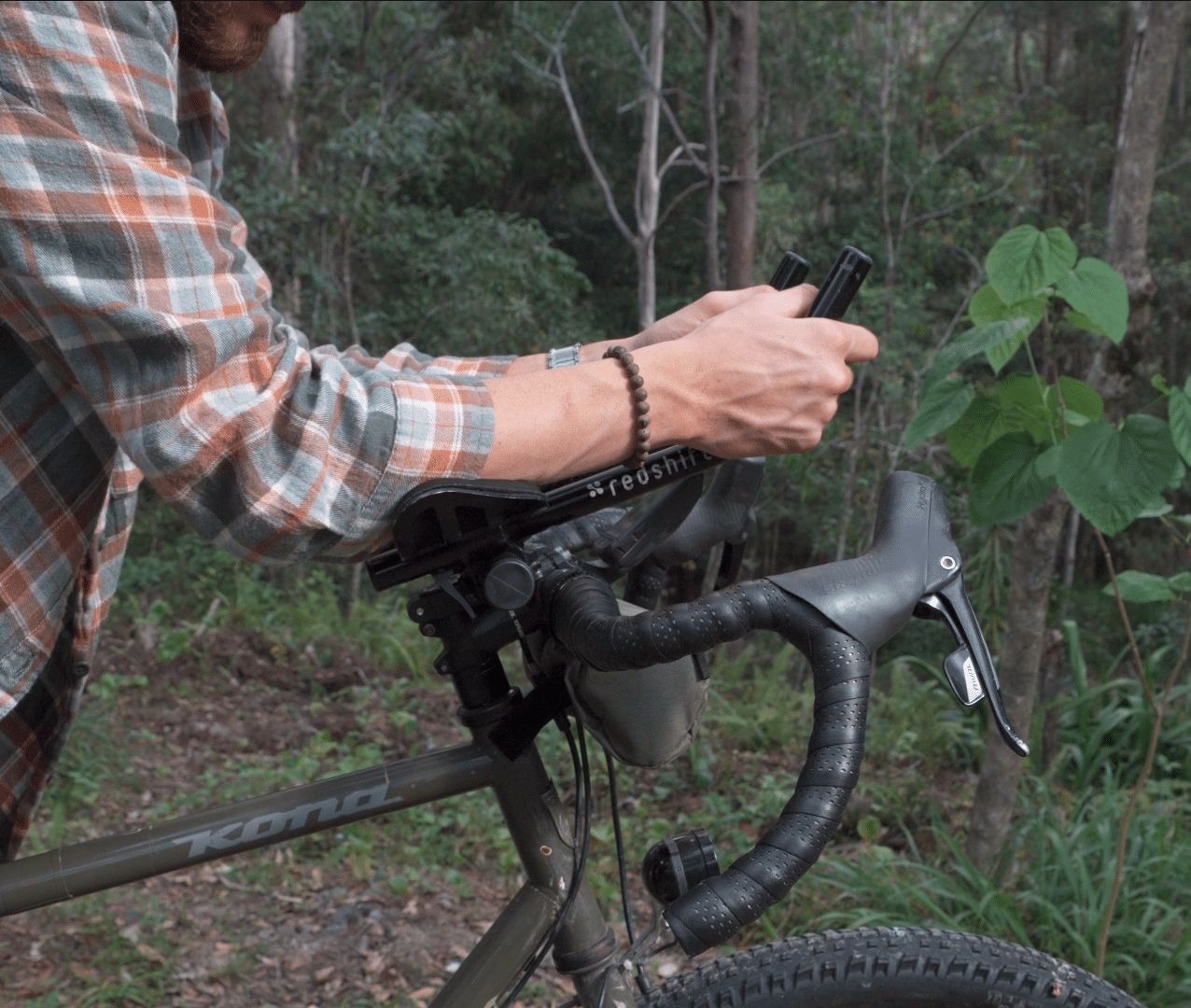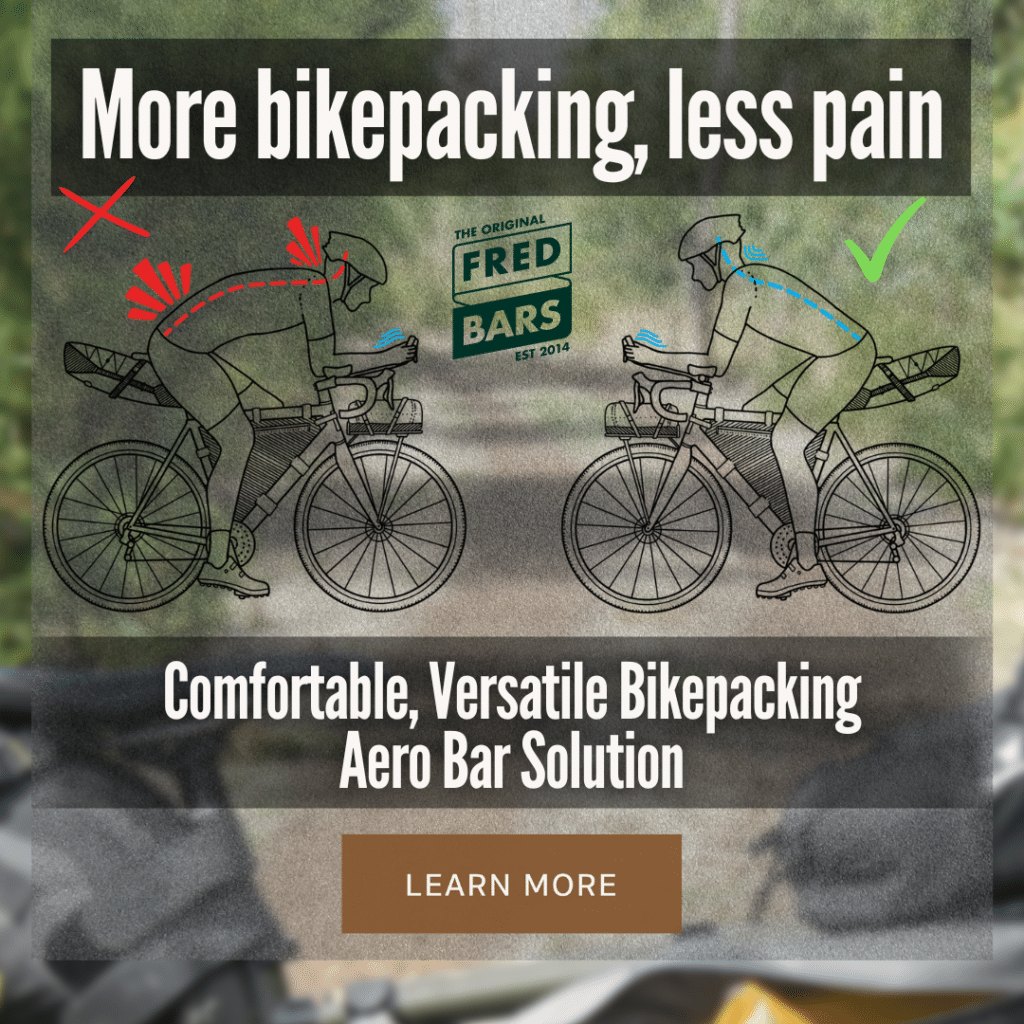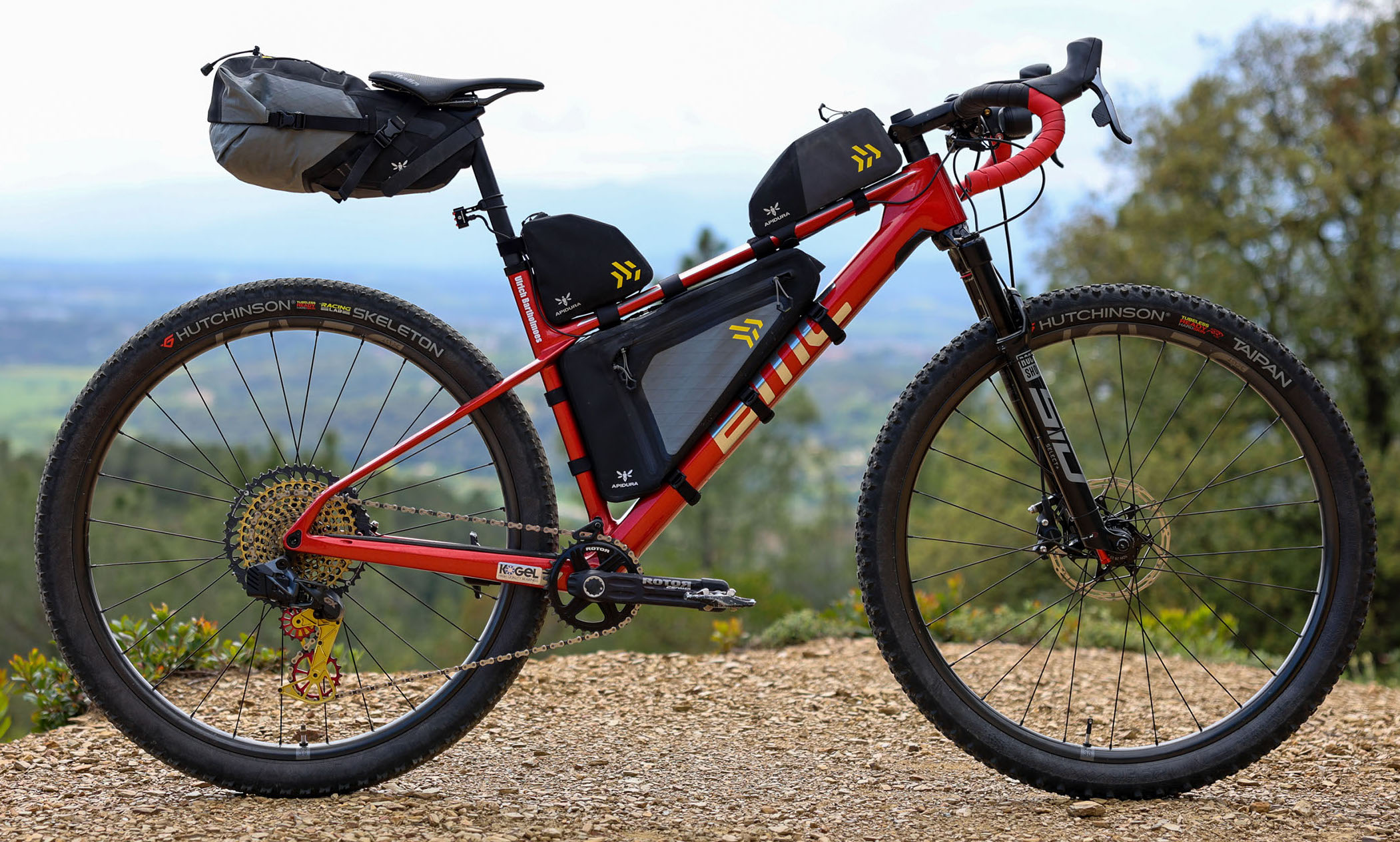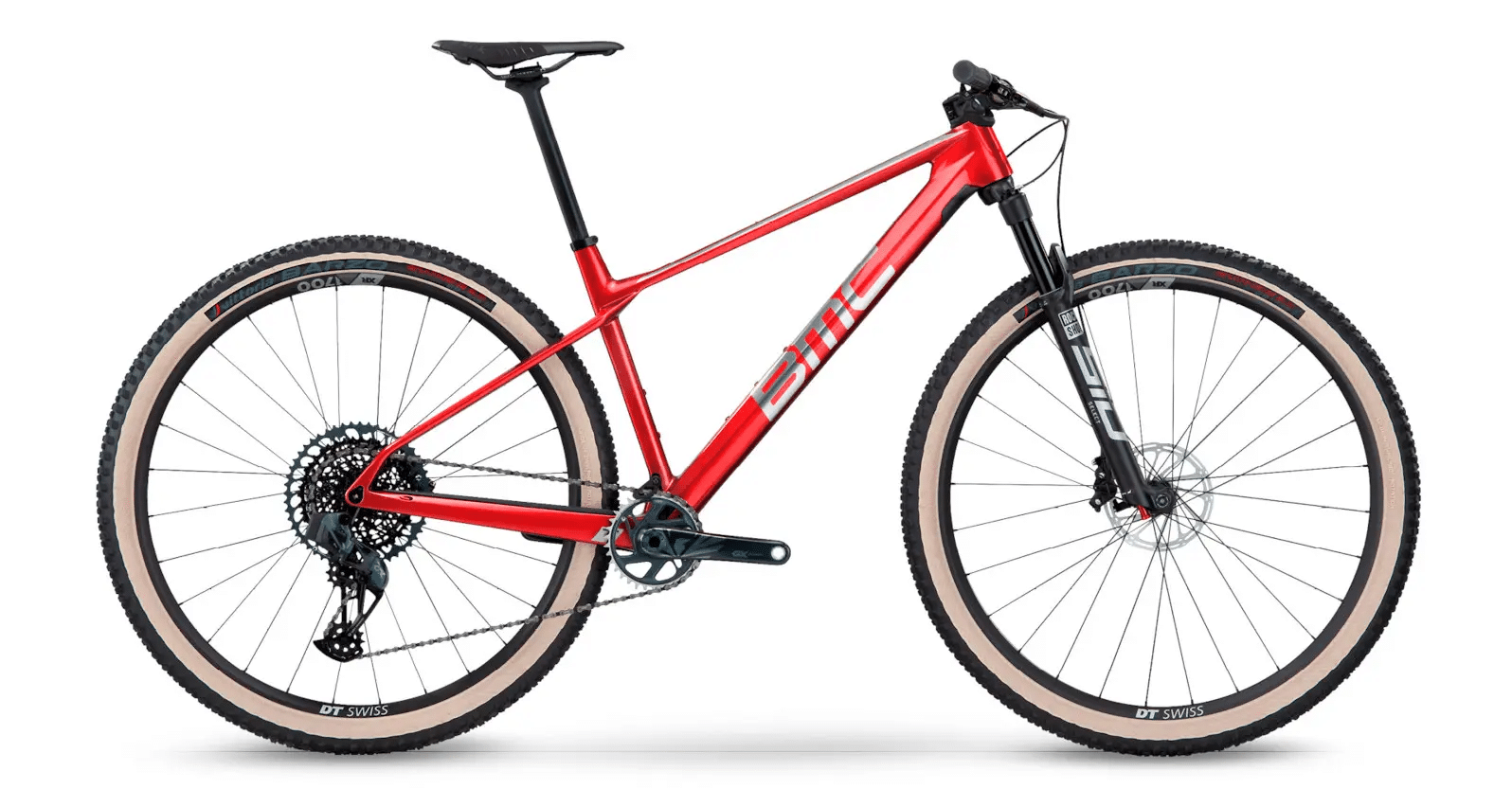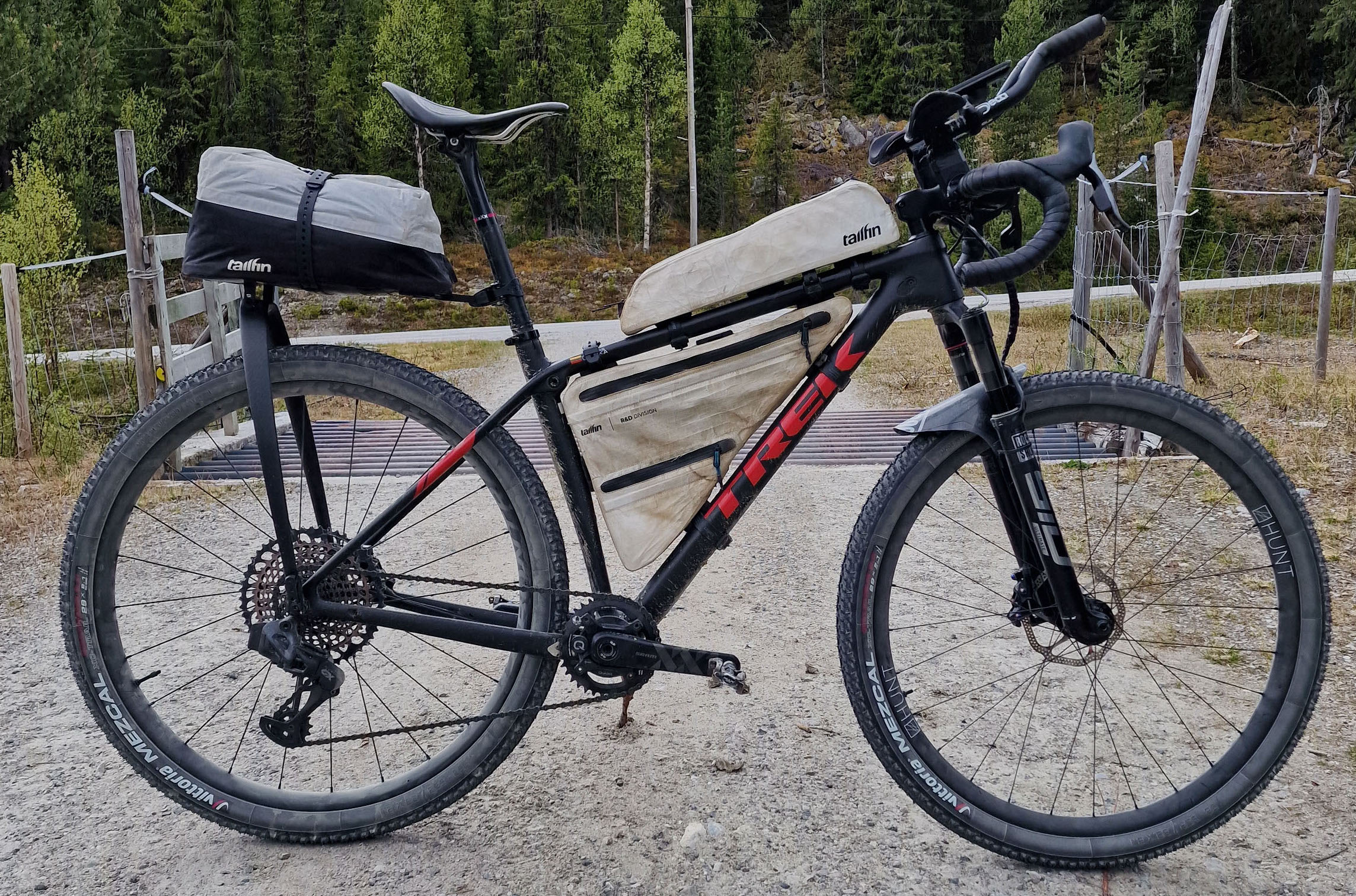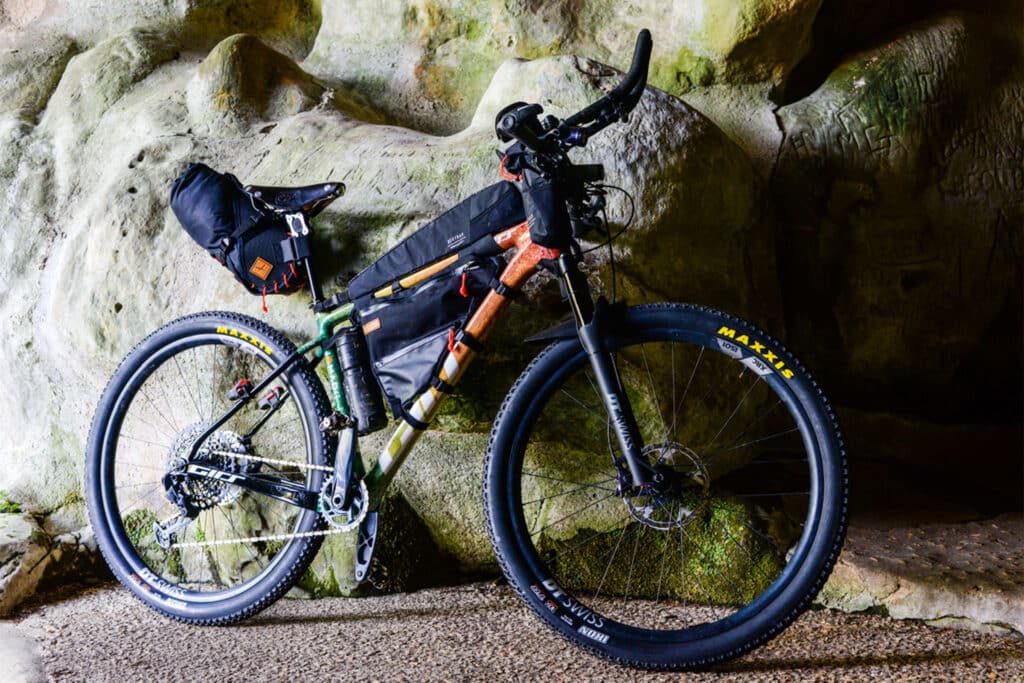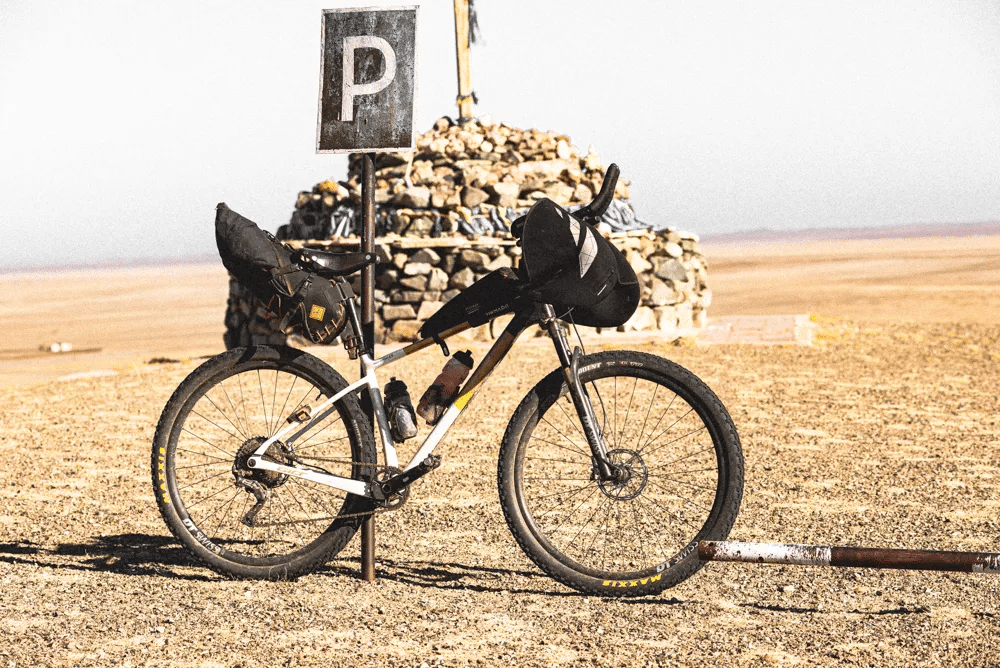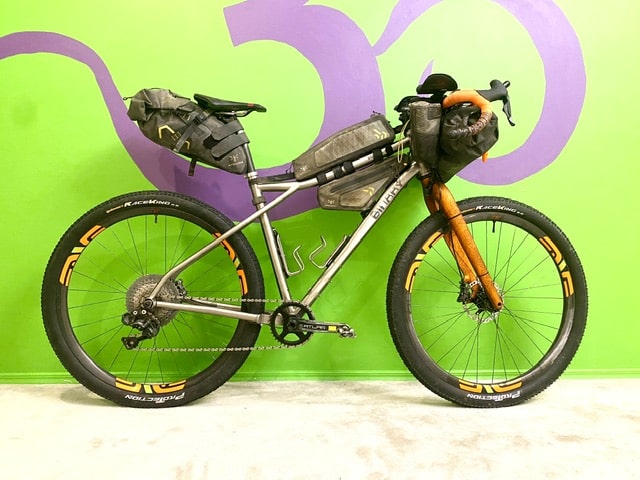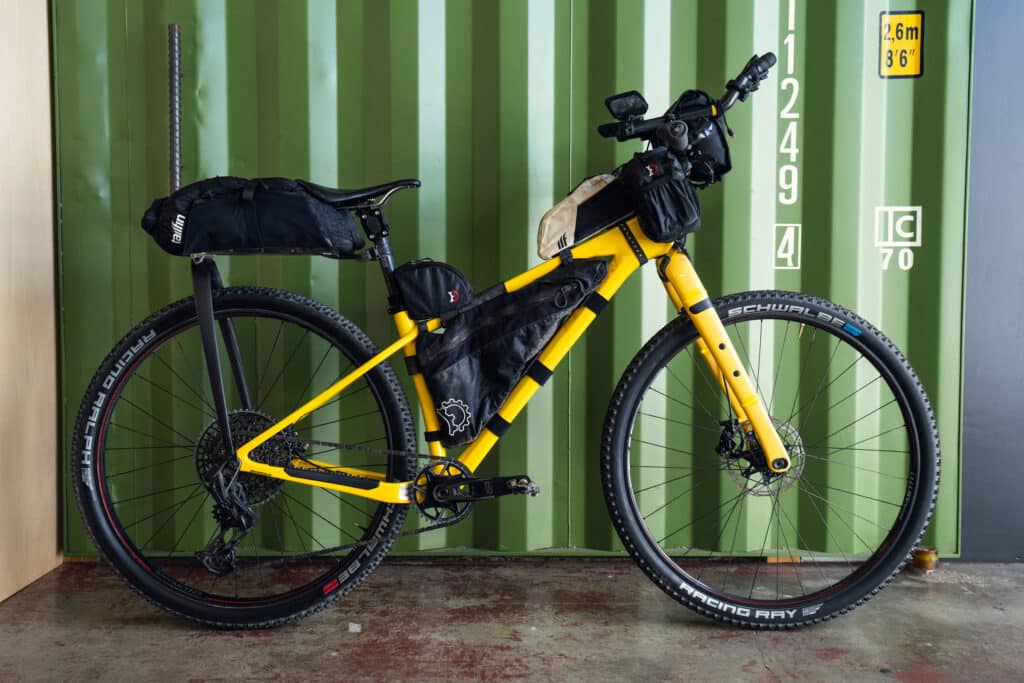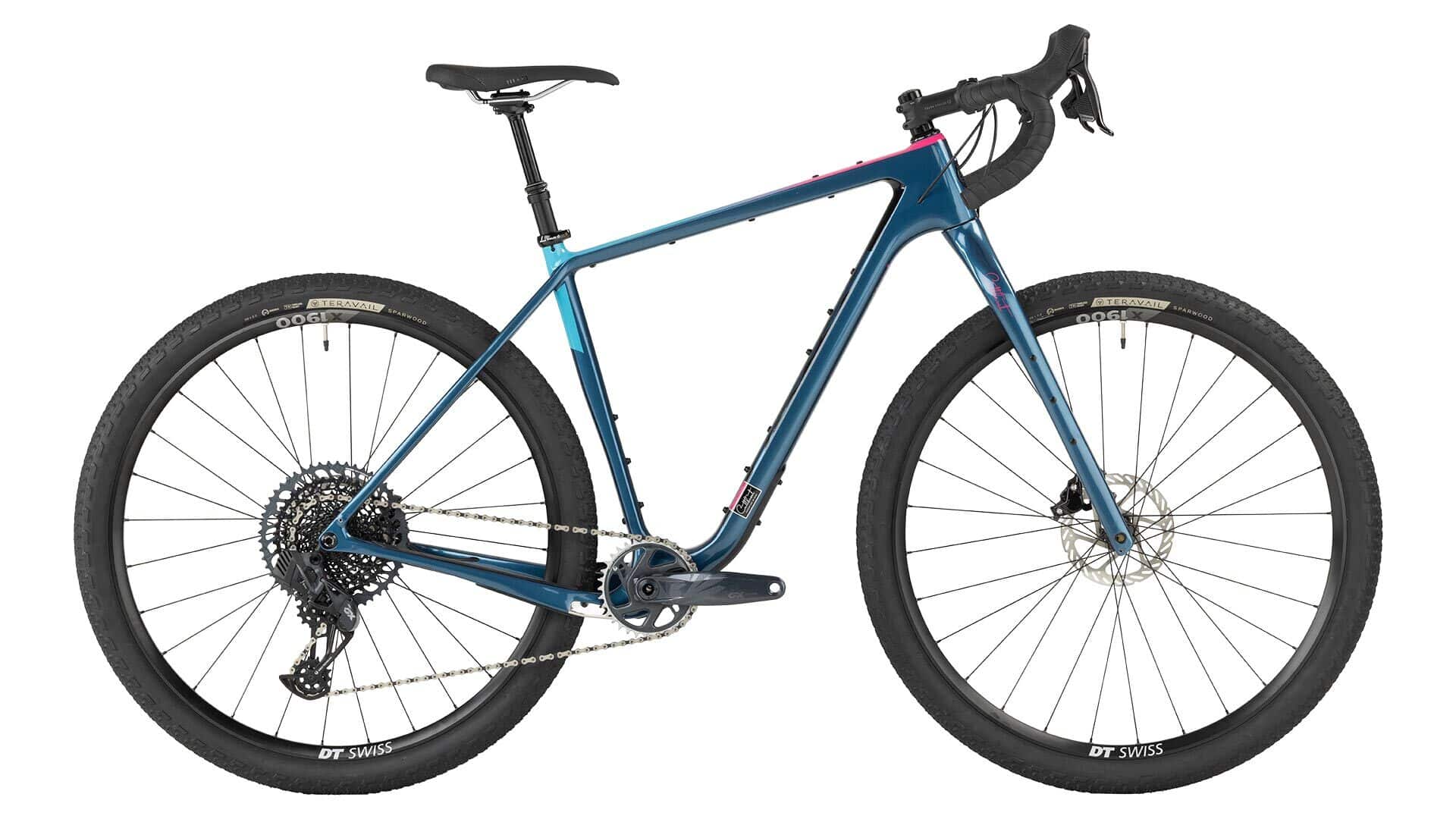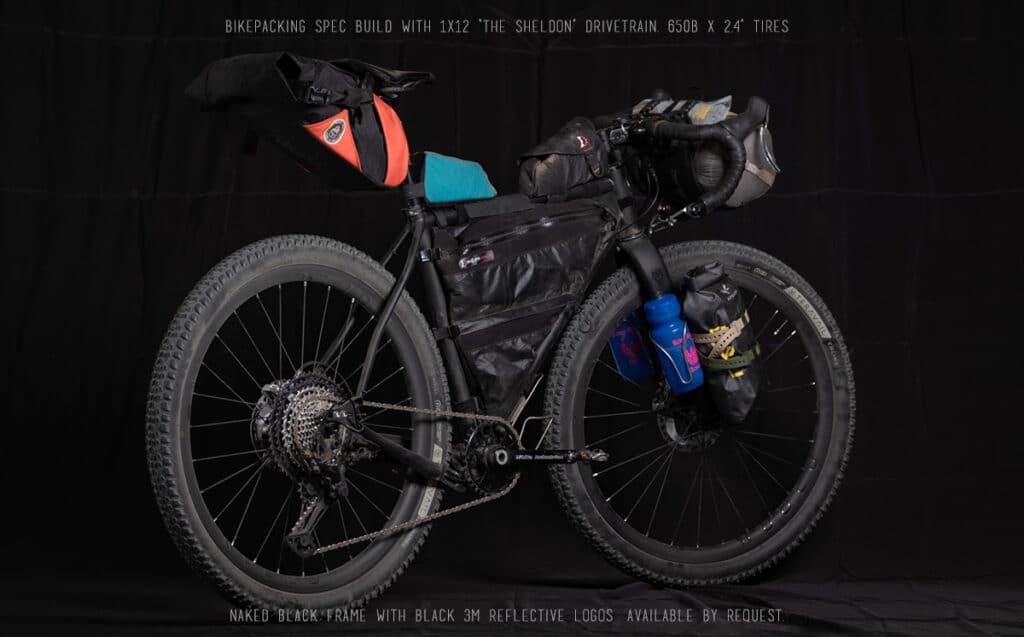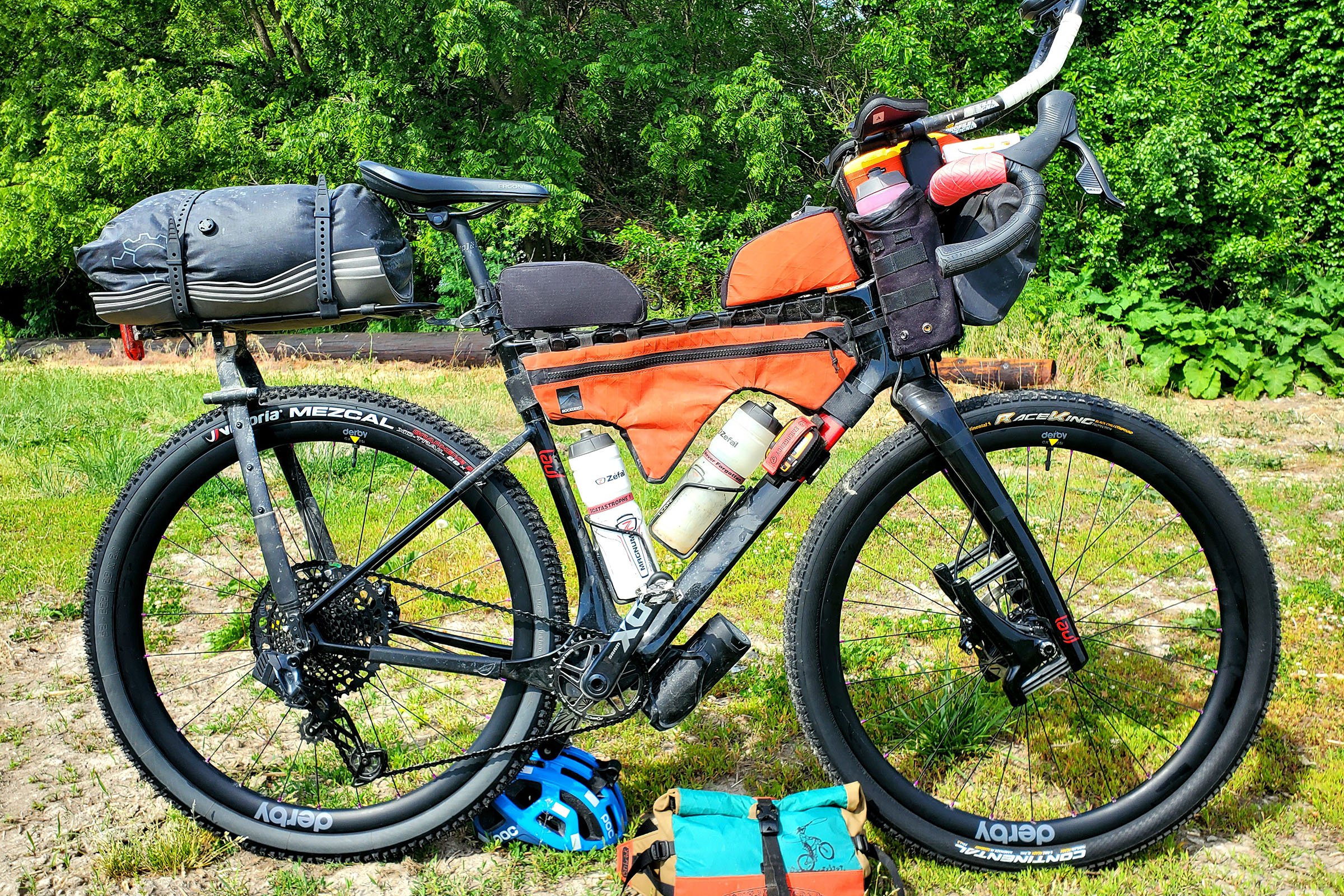Bikepacking the Tour Divide has been on my bucket list for some time now
And I am sure on the lists of many other adventure seekers. Those looking to push their personal potential, to see just how much they can accomplish. It’s the ultimate endurance cycling event!
It’s an annual off-road ride traversing the length of the Rocky Mountains, from Banff, Canada all the way to the Mexican border. Racing all 2,745 miles of Great Divide Mountain Bike Route.
One epic ultra-endurance bikepacking spectacle!
Although the route itself is fascinating and the people who ride these races!
One thing seems to spark the curiosity of people interested in taking on such an adventure!
The Bikes!
Listen while you read: I filmed a video version of this blog post so you can just listen to me talk about these bikes, while you read more below.
But, what bikes are used for the Great Divide Trail and the Tour Divide event?
In this write-up, we take a look at some of the best bikes for this epic adventure
Much like some of the best bikes for endurance cycling events, these bikes are built for off-road riding but also offer the comfort needed for those long days in the saddle.
I’ve made the mistake in the past riding my stock Kona Sutra LTD on the Vic Divide which is an Australia Bikepacking event that runs from Melbourne to Albury around 500 km. It’s just a warm-up to the Tour Divide in the USA which is a 4,418 km non-stop bikepacking race!
But the gearing on my bike was not ideal the 1×11 SRAM Rival 1 setup had a 30T crank and 10-42 Cassette which gave me only a 24.45” climbing gear which made it hard on the very steep sections with all my potatoes
Also, the tires that came with this bike are WTB Venture 700c x 50 tires. Some of the riding was very jarring and tough on the gear. I got a couple of punctures. 50mm wasn’t quite enough, which is why I later opted for 2.3” MTB tires which do the trick!
All these bikes are the perfect steeds precisely for the Tour Divide, with ample rubber and tire clearance, as well as adequate gearing often 20” or lower for ease when climbing the steeper stuff
But my point is that you need to invest in the right gear if you plan to take on these grueling events! Make sure you have the right bike that is going to be capable enough to get you over the finish line and be as comfortable as possible.
Also speaking of comfort!
Amongst all the riders of the Tour Divide, 77% used aero bars. Less for the aerodynamics and extra efficiency but more so for comfort, offering more hand positions and the ability to stretch out.
But one issue I have always run into with aero bars for bikepacking is how much stretching happens. Resulting in discomfort and I just never end up spending that much time in the aero bars while riding!
Until now!
This product is the perfect solution to aero bar comfort!
I’ve been testing out the Fred Bars and I use my aero bars all the time now! Raising the aero bars and bringing them back, results in less reach allowing you to rest in a more relaxed, crouched position.
I noticed quite a few of these top 10 bikes of the Tour Divide are running aero bars. However, most are missing out on the extra comfort the Fred Bars can provide ultimately resulting in less fatigue over the long haul.
Also included are the photos of the exact bikes that raced this year, thanks to bikepacking.com’s Riders Rig content. Part 1 (Dropper Bar Bikes) and Part 2 (Flat-Bar Bikes)
Additionally, I have done the hard yards and included detailed specs like climbing gear inches, price, weight, geometry, and other information for most bikes.
But let’s get into the top 10 bikes, shall we?
1. BMC Twostroke 01 One
Winning this year’s Tour Divide, the Twostroke 01 stands out as a modern and versatile hardtail bike. It boasts a TCC-designed carbon frame with unique geometry tailored for challenging terrains.
The winning bike build was a full custom setup. featuring XS30 Carbon wheels from Beast Components paired with a SON Dynamo hub in the front. Powered by an SRAM Eagle XS Red Drivetrain, configured at 34T x 10-52T.
This gives this build an 18.68″ to 97.72″ gear-inch range and a gear ratio of 0.65 to 3.40
The suspension is a RockShox SID SL Select+ fork with 100 mm of travel and a Beast Component drop bar. The pulley wheels, use low-resistance ceramic components from Kogel, ensuring a seamless pedal experience. The bike is rolling on Hutchinson Skeleton & Taipan tires, both at 2.15”. The standout feature is the Supernova M99 DY Pro front light.
The Twostrok comes with added features like wide tire clearance, integrated protection for both the fork and frame, and internal cable routing to enhance its design.
Moreover, it’s ready for a dropper post addition if needed.
The bike is equipped with a RockShox SID Select+ fork, carbon handlebar, and a 12-speed SRAM GX Eagle AXS groupset.
Rounding off its build are the DT Swiss X 1700 wheels paired with Vittoria Barzo tires.
A progressive, compliant, and confidence-inspiring fast hardtail. Its TCC-designed carbon frame has radical geometry for steep and loose terrain
Price: $5,799
Weight: 9.5 kg (20.94 lbs)
Frame/Fork Material: Frame – Carbon / Fork – RockShox SID Select+ with 100 mm travel
Groupset & Drivetrain: 1×12 Electronic GX Eagle AXS
Gear Ratios: 18.84” to 98.56” (0.65 to 3.40 ratio)
Geometry (Medium frame): Stack/Reach ratio 1.34 – chainstay 425 mm – wheelbase 1,135 mm – (steering) headtube angle 67 deg – trail 109 mm – Fork offset/rake 44 mm – bottom bracket drop 64 mm
Tires and Wheel Sizes (Tire Clearance): 2.25-inch tires, with a max tire clearance of 2.3 inches
2. Trek Procaliber SL
The bike pictured above has drop bars with a 100mm front suspension. It rides on Hunt XC Beyond wheels, which have a dynamo that powers the Supernova M99 DY Pro light.
The Trek Procaliber is a race-ready cross-country hardtail. Its fast carbon frame boasts a trail-taming IsoSpeed decoupler, quick-rolling 29er wheels, and a RockShox Recon Gold RL suspension fork with 100 mm of travel to keep you fast and smooth over roots and rocks during your most demanding mountain bike rides.
This upgraded fork gives you a remote lockout which means you can lock out the suspension while keeping your hands on the bars. This fork comes with a more plush spring and allows for more control over the rougher stuff.
More than just a bike for single trail riding, perfect for those who put in long miles on trails and are looking for the speed, efficiency, and light weight of a carbon cross-country bike.
The IsoSpeed decoupler and carbon frame make it ride smoother than any other hardtail, so your body doesn’t get beat up by trail chatter. Essentially added suspension on the frame.
The Straight Shot downtube helps add extra stiffness and responsive handling without the added weight. Along with the Knock Block headset which protects against spinning bars and fork crowns. Stopping your handlebars from spinning all the way around when you crash.
Price: Around $3,099
Weight: 11.43 kg (25.21 lbs)
Frame/Fork Material: Frame – Carbon / Fork – RockShox Recon Gold RL with 100 mm travel
Groupset & Drivetrain: Shimano XT 30T crank and 10-51T cassette
Gear Ratios: 17.04” to 86.66” (0.59 to 3.0 ratio)
Geometry (Medium Frame): Stack/Reach ratio 1.42 – chainstay 432 mm – wheelbase 1,103 mm – (steering) headtube angle 68.8 deg – trail 97.3 mm – Fork offset/rake 42 mm – bottom bracket drop 60 mm
Tires and Wheel Sizes (Tire Clearance): 29 x 2.2″ tires With a max tire clearance of 29 x 2.4″
3. Girs Nomade
With a very unique paint job, this MTB Girs Nomade Carbone comes with a Sram 12-speed mechanical set, Shimano XT/DEORE brakes, fresh Maxxis Ikon tires, and a 1×12 drivetrain sporting a 32T chainring.
It rides on DT Swiss 29-inch wheels, with a front SON Dynamo hub.
The bike boasts ENVE handlebars, a Cane Creek post with a touch of suspension, a Selle Idéale seat, and a Profile Design extension complemented by 70mm shims beneath the armrests. It’s also equipped with a Garmin 67i.
The Nomade bike, designed for the adventurous and curious traveler, prioritizes versatility and freedom in its design.
The frame, weighing at 1090g, is priced at 1490€, while the combined frame and fork kit comes in at 1880€.
The main allure of the Nomad is its adaptability. Whether you’re navigating wet grounds, mountains, or sandy terrains, the Nomad can adjust accordingly.
Its XC-type geometry promotes control and agility, especially evident when equipped with a 110 mm fork for winding trails or set in a Beach Race mode with a rigid fork and 35mm rim, ideal for sandy conditions.
The balanced geometry, featuring a slack 68.5-degree head angle and enhanced reach with 435mm chainstays, ensures precise control over challenging terrains and preserves agility for tighter trails.
Additionally, the Nomade includes a universal derailleur hanger designed for compatibility across all drivetrains while protecting the derailleur from impacts.
The bike’s durability and performance are anchored in the use of Toray 700 and 800 carbon materials combined with a specialized resin blend, ensuring consistent performance.
Lastly, the bike focuses on integrated design, with cables and housings seamlessly entering the frame, enhancing both the bike’s aesthetics and function.
This integrated system is compatible with a variety of standard ACR-type integration systems available in the market. All in all, whether you’re looking for a daily ride or gearing up for a competition, the Nomade offers a reliable and versatile biking experience.
4. Binary Bicycles Havok
The Havok bike, tailored for those with an adventurous spirit, is built for both speed and endurance.
Its titanium frame ensures a comfortable ride, absorbing the roughness of terrains like washboards and ruts.
This versatile frame can accommodate a range of tire sizes, from skinny gravel tires to broader 29 × 3.0 tires, allowing riders to adapt based on their upcoming journey.
One of its standout features is its sizable front triangle, perfect for fitting a frame bag.
It comes equipped with triple bottle mounts on both the top and bottom of the downtube and also offers rack and fender mounts for added bikepacking and touring gear flexibility.
For those looking at drivetrain options, the Havok is 2x compatible and provides dropper post routing.
It is designed to support either drop bars or other preferred touring bars.
The sliding dropouts offer adaptability, even allowing for a singlespeed setup. Furthermore, the bike can be paired with a 100mm 29er fork if riders seek added suspension.
In terms of standard features, the Havok boasts a lightweight titanium build with a hand-brushed finish, accented by sandblasted logos.
The bike’s axle spacing is set at 12mm x 148mm boost, and it employs sliding Paragon-style dropouts. It’s designed with a 44mm straight headtube, compatible with a tapered fork, and a threaded 73mm BSA bottom bracket.
The external cable routing and 31.6mm Seatpost, which is internal dropper compatible, add to its functionality.
Moreover, the bike can comfortably fit 29+ tires (up to 3.0), and its geometry supports both rigid and 100mm 29er suspension. Whether it’s for gravel paths, singletracks, all-road, or bikepacking, the Havok promises a reliable and adaptable ride.
5. Moots MX RSL
6. Fezzari Solitude 29
This Fezzari Solitude bike build is fully rigid, featuring an Enve carbon fork for stability. It rides on ZIPP zero moto wheels equipped with a Dynamo hub, and its tires are the Schwalbe Racing Ray and Ralph, both at a size of 2.1”.
The bike has SRAM transmission, which comes with a 34T chainring and a wide-range 10-52T cassette.
For added comfort on bumpy terrains, it incorporates a Redshift stem and a Cane Creek Seatpost for some suspension. A notable feature for those long rides is the infinity seat, ensuring rider comfort.
Additionally, it comes with an aero bar that brings together various features, giving the rider an aerodynamic advantage. Along with a product like the Fred Bars you can also ride in comfort!
This bike appears to be a solid choice for those considering participating in the tour divide race, providing a blend of speed, comfort, and durability.
The Solitude is a hardtail mountain bike designed for cross-country riders seeking speed, adventure, and the thrill of competition.
Its carbon frame utilizes Monform™ technology, which offers a single-piece carbon construction rather than the traditional two-piece, resulting in a lighter yet stronger frame with enhanced power transfer.
This bike’s geometry strikes a balance between racing and recreation: a 68-degree head tube angle provides stability in rough terrains and during turns, while a 75-degree seat tube angle ensures an optimal riding position for power and efficiency.
Notably, the Solitude’s frame weighs less than 1000 grams and showcases improved lateral stiffness and strength compared to its predecessors, giving riders added confidence in diverse terrains.
In essence, for those eyeing the Tour Divide race, the Solitude might be a worthy contender, combining speed, durability, and a fun riding experience.
7. Salsa Cutthroat
The most common bike chosen for the Tour Divide and it’s no surprise as the Cutthroat is Salsa’s Tour Divide-inspired drop bar bike!
The bike pictured above is a 2020 Cutthroat model featuring a GRX 800 1×11 drivetrain and RaceFace Next SL cranks, boasting a 32T OVAL chainring combined with a 10-46T cassette, ensuring smooth rides on hilly terrains. Comfort is guaranteed with a Koda saddle and the handlebars are wrapped in Lizard Skin tape for added grip along with aero bars.
As it’s an immensely capable carbon bikepacking bike!
Derived from a rich lineage, the Cutthroat features a unique drop-bar mountain bike geometry designed to instill confidence, even when the trails get rough.
Its carbon frame ensures efficient energy utilization while its Class 5 VRS rear end effectively absorbs minor jolts from both roads and trails, helping riders maintain their energy.
Additionally, the Cutthroat offers multiple cargo mount options, allowing riders to personalize their gear setup.
A notable component is the SRAM’s GX Eagle AXS groupset, which has proven to be durable and dependable, making it an excellent choice for extended backcountry adventures like the Tour Divide.
Price: $3,499 to $7,799 ($5,599 Cutthroat C GX Eagle AXS Model) – Comparable to the Epic Hardtail Comp above
Weight: 11 kg (24.3 lbs)
Frame/Fork Material: Frame – Carbon / Fork – Carbon (Earlier 2019 models offer a 100mm RockShox Reba front suspension setup!)
Groupset & Drivetrain: 1×12 Electronic GX Eagle AXS, Rival eTap
Gear Ratios: 18.78” to 98.22” (0.65 to 3.40 ratio)
Geometry (56cm Frame): Stack/Reach ratio 1.61 – chainstay 445 mm – wheelbase 1,090 mm – (steering) headtube angle 69 deg – trail 79 mm – Fork offset/rake 51 mm – bottom bracket drop 70 mm
Tires and Wheel Sizes (Tire Clearance): 29 x 2.2 mm tires, with a max official tire clearance of 2.4” for both frame and fork. While some have measured for up to 29 x 2.8″ tires
8. Rodeo Labs Flaanimal 5.0
The bike in the first picture is rolling on a Rodeo 2.0 wheelset. Sram AXS drivetrain (36t chainring, 10-50t 12-speed cassette), Hope Tech4 X2 brakes, and Maxxis Ikon 2.0″ / Vittoria Mezcal 2.1″ tires.
Since 2015, the Flaanimal has been the gold standard for adaptability. Whether on roads, gravel, or challenging terrains, this bike can be tailored to any rider’s imagination. A production steel and carbon gravel/adventure bike that has all you could possibly need
It can be blisteringly fast on the pavement with skinny slick tires. It can be smooth, efficient, and competitive on gravel. And is now considered an It can be blisteringly fast on the pavement on skinny slicks. It can be smooth, efficient, and competitive on gravel. And is now considered the perfect choice for a bikepacking racing rig, with its win at the 2021 Tour Divide as piloted by Jay Petervary.
You can tailor your Flaanimal 5.0 with custom finishes and build specs.
The CNC machined yoke and dropped stay design allows for tire sizes up to 700c x 50mm or 650b x 2.4”
While retaining the strength of steel, a carbon seat tube has been integrated to ensure a balance between durability and weight.
Custom butted and heat-treated Japanese tubing ensures strength and durability, even on the most challenging terrains. Let’s be honest The Japanese know how to make stuff!
The updated sliding dropout design offers an additional 10mm of slider range, allowing riders to tweak the bike’s handling and tire clearance.
Tidy aesthetics and modular design thanks to rubber routing port plugs which accommodate various build types.
The improved bottom T47 bottom bracket design it ensures quiet operation, compatibility with all crankset spindle diameters, and room for internal Di2 and dropper post routing.
Price: $1,548.75 (Frameset)
Weight: 12.5 kg (27.6 lbs)
Frame/Fork Material: Carbon and steel fusion
Groupset & Drivetrain: Frameset Only
Gear Ratios: Frameset Only
Geometry (56cm frame): Stack/Reach ratio 1.47 – chainstay 425 mm – wheelbase 1,033 mm – (steering) headtube angle 71 deg – Fork offset/rake 45 mm – bottom bracket drop 65 mm
Tires and Wheel Sizes (Tire Clearance): Max tire clearance of 700c x 50mm or 650b x 2.4”
9. Mason InSearchOf
The first photo features a Mason InSearchOf steel frame paired with a carbon fork, and features SRAM’s 1×12 electronic shifting system, blending Force and X01 components.
It’s equipped with a Shimano XT crankset and a unique XT 10-51T cassette that’s compatible with the SRAM shifter.
The bike rides on René Herse Fleecer Ridge tires mounted on a custom wheelset combining a SON dynamo hub and DT Swiss 240.
Lighting and charging are managed by KLite. For handling, it sports a 46cm Ritchey Beacon drop bar wrapped in a double layer of Wolf Tooth tape.
Rider comfort is prioritized with a Redshift suspension stem and Ritchey aerobars featuring SRAM shifting buttons.
The bike stands on XT pedals, and seating is provided by a Specialized Power saddle. Additional features include Reverse Fillmore valves, Orange Seal tire sealant, SRAM HS2 brake discs, and SwissStop brake pads.
This rig is available in some nice build options with about 4 models to choose from all starting from $3,864 (Rival 1x). In this article, we are going to use the GX Eagle AXS priced at $4,737 model for specs. But it might be worth checking out some other options to better suit your needs.
This has to be one of the most capable-looking drop bar bikes upon first impression.
The ultimate steel adventure bicycle has been adopted by the Ultra-Endurance community realizing the comfortable, fast, multi-surface capabilities of this bike making it ideal for such Continent Crushing rides. Much so that Josh Ibbett won the 2015 Trans Continental race on a Mason.
The frame is composed of custom-formed Progressive-butted Dedacciai ‘Zero’ Steel tubing which is used on the Top Tube, Down Tube, Seat Stays, and Chain Stays. While the Seat Tube uses Reynolds 853 steel and a Stainless bottom bracket.
There is plenty of clearance and the bottom of the down tube for mounting gear like the ‘Anything Cage‘ style bosses on top of and underneath the Down Tube.
The geometry has been suspension fork corrected for up to 100mm of travel if you want that extra comfort on the rough stuff.
However, it comes with the Hot Shoes fork which is internally routed for dynamo light systems and eyeletted for rack and mudguards. With all the mounting options you could ask for up front. You also get a Shutter Fender which is exclusive to Mason
The frame is also stealth dropper compatible, with a max tire clearance for up to 29 x 2.4” or 27.5 x 2.8” tires. Comes with the Ritchey Venturemax Comp handlebars that have a generous 24 deg flare for that extra comfort in the drops.
Looking for even more comfort??
Price: $3,864 to $5,285
Weight: Just over 11 kg (24.25 lbs)
Frame/Fork Material: Frame – Steel / Fork – Carbon
Groupset & Drivetrain: 1×12 Rival eTap, GX Eagle (with a 34T crank and 10-52T cassette)
Gear Ratios: 18.58” to 97.21” (0.65 to 3.40 ratio) with 27.5 x 2.8″ tires
Geometry (50cm Frame): Stack/Reach ratio 1.64 – chainstay 445 mm – wheelbase 1,082.3 mm – (steering) headtube angle 69 deg – trail 85.8 mm – Fork offset/rake 50 mm – bottom bracket drop 75 mm
Tires and Wheel Sizes (Tire Clearance): Choice of either WTB Ranger 29 x 2.4″ or 27.5 x 2.8″ With the same tire clearance.
10. Lauf Seigla
The holy grail of gravel bikes!
The 2022 Lauf Seigla pictured above is equipped with 520mm PNW Coast drop bars, augmented by Profile Design T1+ 70mm risers (could have been better to opt for the Fred Bars instead, allowing you to sit more upright and back then these aero risers would allow for). And cushioned with Redshift Cruise Control grips.
For the tires, it sports a 2.1″ Mezcal at the back and a 2.2″ Race King up front. The bike rides on DERBY carbon wheels, paired with a White Industries rear hub and a Son front hub.
Power transmission is managed by a SRAM 10-52T cassette coupled with a 34T Wolf Tooth Oval chainring, ensuring a versatile range for both uphill and flat terrains.
A fast gravel bike that is also comfortable, capable, and fun for exploring. A suspension gravel bike that we haven’t covered too much of here at Cycle Travel Overload. However, we have covered the very unique carbon gravel suspension fork design, that comes with this bike as an option. Adding to that extra on-bike comfort.
The bike is available in 4 main build options with that Grit 3rd Gen carbon Suspension Fork.
The top pick for the Tour Divide is the Seigla Ultimate model. While some have transformed this into a mullet drive conversion. This Ultimate comes with a 1×12 electronic drivetrain setup.
Price: $2,590 to $5,990
Weight: 8.44 kg (18.6 lbs)
Frame/Fork Material: Frame – Carbon / Fork – Carbon Lauf Grit Suspension Fork with 30mm travel
Groupset & Drivetrain: 1×12 Electronic RED XPLR eTap, RED eTap with 40T Crank and 10-44T Cassette
Gear Ratios: 25.51” to 112.13” (0.91 to 4.00 ratio)
Geometry (Medium Frame): Stack/Reach ratio 1.43 – chainstay 425 mm – wheelbase 1,040 mm – (steering) headtube angle 70.5 deg – trail 75 mm – Fork offset/rake 47 mm – bottom bracket drop 65 mm
Tires and Wheel Sizes (Tire Clearance): Comes with 700c x 45mm tires. With a max tire clearance of 29 × 2.25″
Tour Divide Q&A
How long does it take to do the Tour Divide?
The Tour Divide typically takes riders between 15 and 35 days to complete, depending on skill, conditions, and individual pace.
How do you get into the Tour Divide?
The Tour Divide is an unsanctioned race, so there’s no official entry process. Riders simply choose a start date, typically aligned with the grand départ, and begin.
How many people do the Tour Divide?
Each year, the number varies, but typically around 100 to 200 riders attempt the Tour Divide, with completion rates varying.
Can you do the Tour Divide on a gravel bike?
Yes, a gravel bike can be used for the Tour Divide, though many riders prefer mountain bikes for added comfort and capability on rough sections.
How much elevation does the Tour Divide route have? (How many feet of climbing are in the Tour Divide?)
The Tour Divide has over 200,000 feet of elevation gain, making it a challenging and intense ride.
How much does Tour Divide cost?
There’s no entry fee for the Tour Divide, but riders should budget for gear, food, accommodations, and other personal expenses during the ride.
What is the weather window for the Tour Divide?
The most popular time to start the Tour Divide is the second Friday in June, but riders can choose other start times, generally between June and September, depending on weather conditions.
What is the difference between the Tour Divide and the Gdmbr?
The Tour Divide is a bikepacking race along the Great Divide Mountain Bike Route (GDMBR). While the GDMBR is the route itself, the Tour Divide is the specific self-supported race that takes place on this route.


